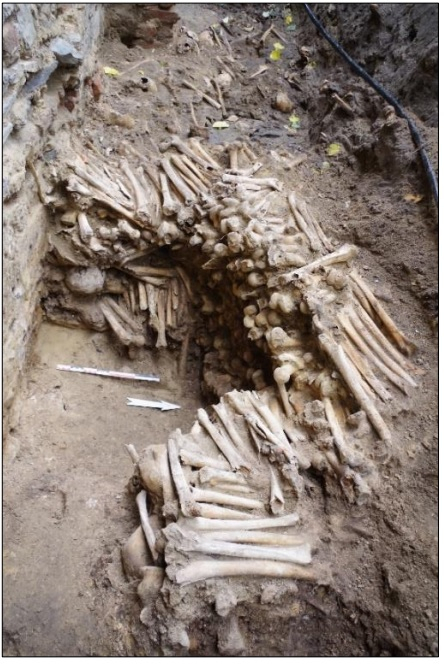England's Banwell Bone Cave and Catacombs of Paris are two famous places in the world which are made with human remains. Over the years, excavators have found such remains in several caves and other ancient sites, but this time they found human bones and shattered skulls in Belgium while excavating the grounds of a church in Ghent.
Archaeologists have found nine walls, which are built with adult thighs and shin bones and the intermediate zones were filled with skulls revealed Ruben Willaert, Restoration & Archeology / Decoration, the Dutch company that found the walls during an excavation ahead of construction.
The bone walls
It should be noted that the structures found in Belgium church were likely the work of people who cleared out an old graveyard to make room either for new bodies or a church renovation hundreds of years ago, said archaeologist Janiek De Gryse, a staff at Ruben Willaert and the leader of the excavation project.
As reported by the Live Science, de Gryse said, "When clearing a churchyard, the skeletons cannot just be thrown away. Given that the faithful believed in a resurrection of the body, the bones were considered the most important part." He said securing human remains were so important that sometimes stone houses were built against the walls of the city graveyard to keep the remains in what is called "an ossuary."
These discovered historic bones have taken to the University of Ghent, where these will be examined as part of a detailed inventory.

The discovery
It should be noted that these newly found human bones were found on the north side of Saint Bavo's Cathedral, formerly known as the Church of St. John the Baptist. After the discovery, researchers stated that the radiocarbon dating of the bones showed these bones date back to the second half of the 15th century. As per de Gryse, the walls were likely constructed during 17th or early 18th centuries. A historic document revealed that the church's cemetery was cleared during the first half of the 16th century and after the year of 1785 when the cemetery stopped further burials.
de Gryse mentioned that most of the historic cemeteries include large pits or layers filled with loose human bones but those are nothing like Belgium church bone walls, which consist only of bones from the lower limbs. As per the researches, the creators of these walls probably were in a hurry as they did not bother to collect fragile-small bones, such as vertebrae, ribs or bones from the hands or feet.
The excavators found bones from both adult men and women but children's bones appear to be absent from the walls. This particular finding conflicts with the known life expectancy from that exact time period, when children often died due to chronic disease. In a statement from Ruben Willaert, it was mentioned that "Children's bones are small and fragile, so they were not collected."

Ritual: Human sacrifice
Whenever human remains had found at an unusual site, the first thing comes to mind is human sacrifice, which was common in hundreds of years ago in several places. The offering of the life of a human being has often been part of an attempt to commune with a god and to participate in the divine life. There are two types of human sacrifice, which include the offering of a human being to a deity and the entombment or slaughter of servants or slaves intended to accompany the deceased into the afterlife.
In terms of these recently found bone walls, de Gryse said, "At the moment we are still examining which idea caused this. Is it only a practical thing (piling up bones in a very compact way) or is there also a religious/spiritual dimension?"









